Reviews
Mel Stuart
USA, 1971
Credits
Review by Adam Balz
Posted on 04 October 2011
Source Warner Bros. DVD
Categories 31 Days of Horror VIII
I blame my parents. At the tender age of five or six, my parents - who rented both their VCR and VHS tapes from the local video store, home video being a relatively new and expensive technology - brought home Willy Wonka and the Chocolate Factory, assuming a film they remembered from their own childhoods would find similar favor in mine. However, my parents grew up during the sixties and seventies, when the culture was sodden with images of Vietnam, alternative cultures, and the Kennedy assassinations; I, on the other hand, was being brought up during the Reagan Revolution, when “Morning in America” meant a more subdued, homogenized society on the nightly news. Anything that was foreign or strange was relegated to the boundaries of society’s consciousness, as evidence in the decade’s Best Picture winners: Ordinary People, Gandhi, Chariots of Fire, Out of Africa, Terms of Endearment, and so on. In other words, people wanted strained melodrama about interpersonal relationships. (In comparison, Willy Wonka was released the same year as Straw Dogs_, A Clockwork Orange, Dirty Harry, Harold and Maude, and THX 1138.)
My parents seemed to exist as hybrids of these two cultures—living as blue-collar parents in the easy eighties, though still unable to shake the world of their youth. These are the people who, before and after Willy Wonka, would let me see glimpses of the Terminator films, The Wild Bunch, and The Birds. (I should add, in their defense, that some of these were less about them watching the movie - or making me watch the movie with them - than them leaving their TV unattended during the afternoon, when I would master the remote control like a professional in a world before the V-Chip.) It was this constant back-and-forth, this inner tug-of-war that probably existed in all baby-boomers at the time, that introduced me to film beyond the Children’s Section of the local Blockbuster. While other adolescents my age were watching patronizingly simple Disney cartoons, I basked in Tim Burton, James Cameron, Robert Zemeckis, David Lynch—directors who pushed limits that I didn’t even know existed. “Normal” films for me were what other parents might call “weird” or “inappropriate,” and any Disney films I watched left little residue—a stale mint after a sumptuous banquet.
No film pushed those boundaries further than Willy Wonka. What begins as a disguisedly innocent film - a young, poor boy named Charlie is given the chance to tour a chocolate factory after winning a contest - becomes even more incredible when Charlie and his Uncle Joe, along with the four other contest-winners and their parents, meet the infamous confectioner himself, the unusually cheery and well-dressed man of the film’s title. To an adolescent like myself, he was the ultimate hero—the quick-witted owner of a candy factory. And his clothes - lush and colorful, their softness permeating the television screen - were even more desirable when cast against the obvious gray poverty of the surrounding city and its people.
Introductions are made, a contract is signed, and Wonka’s funhouse unfolds itself: coat-hangers that are actual hands, an elevator that is also an optical illusion, a room that shrinks to a point, a door that opens with a song. Charlie and Uncle Joe are tickled by these sly little flourishes of mischief; the other kids and their parents are either taken aback or disgusted. When Wonka’s first room is revealed - a rolling green pasture split by a river of chocolate, all of it edible - it strikes at the heart of every adolescent. It’s beautiful, even beyond its consumability, as though it were a cartoon come to life—a dream filled with overdrawn gumdrops and Gummy Bears the size of small children. And that’s the way it needs to be for the upcoming turmoil to fully work—we the viewer needs to be lured in, just like the five kids. This room, and in fact this entire factory, is too good to be true, but we’re young and oblivious to those more adult-oriented words of wisdom. Even when Augustus Gloop falls into the river of chocolate and is sucked up, destined for the Fudge Room, the spell isn’t broken. “Silly Augustus,” we tell ourselves. “He told you not to, and yet you did.” We blame him, make an excuse for why it happened, never acknowledging that putting a river of chocolate in front of a fat European boy was just asking for trouble. No, we think to our young selves, I would never have done that. Silly Augustus.
But it’s a pattern that will appear throughout the movie: Willy Wonka taking the children to rooms that feed into their individual obsessions. Just as a river of chocolate dooms Augustus from the beginning, so will unstable gum to a champion gum-chewer and golden eggs to a covetous trust-fund child. And if these stops were random, if they had been predetermined before the winners were even known, it would all be one big coincidence. But there are no coincidences here, no predetermined route. This tour of Wonka’s has been tailor-made for these very five children.
It’s the scene following Augustus’ exit that is perhaps the most memorable—the infamous boat scene, in which the remaining eight visitors embark on a voyage along the chocolate river. As they travel, the boat’s pace quickens, and suddenly the walls of the tunnel are filled with horrifying images: a chicken’s head being cut off, a centipede crawling across a face, a lizard eating bugs. It’s all very experimental, a rear-projection montage of death and decomposition that drives everyone - except Wonka, Charlie, and Joe - into tailspins of shock and nausea. It’s the first time we see Wonka without his veneer of innocence. He sits at the front of the boat with a grin; his eyes are fixated on his passengers, never once looking at the tunnel walls. He is feeding off their terror, learning everything about them—a voyeur in plain sight. And then he begins to recite a song, a maddeningly simple tune, until one of the parents demands that the boat be stopped. This man, you think to yourself, this person whom I idolized, is crazy. It’s only years later, when talking about the film, that a friend of yours points out the boat only has eight seats. And you remember that Wonka’s tour was supposed to have ten people on it all along. Wasn’t it?
After the boat ride ends, the children are picked off one by one, in the fashion mentioned before. Violet Beauregarde, an obnoxious champion of gum-chewing, becomes a blueberry after eating Wonka’s new and experimental gum. (Watching the film as an adult, he practically leads the four remaining children to that one machine with unaccustomed glee, talking about its revolutionary purpose before refusing to let anyone sample its product. It’s like dangling a steak in front of a hungry dog—the real shock would be if the dog didn’t bite.) When the remaining three children are escorted to the room of Golden Eggs, Veruca Salt finds herself labeled a “Bad Egg” and dropped down a garbage chute after being denied one of the priceless geese. (Surely a mischievous madman would know that denying her this greatest of luxuries would induce her to jump for it and seal her fate.) And Mike Teevee zaps himself through the air and into a television after Wonka, seemingly oblivious to the possible uses for his invention, feigns disinterest in televising a human being.
This leaves Charlie as the winner. The younger me rejoices - we knew it would be him all along, how couldn’t it be? - but then his prize is denied. Wonka wishes both him and Uncle Joe the best, points them to the exit, and leaves. When Uncle Joe confronts Wonka - in an office containing halves of everything, including a file cabinet and a clock - the confectioner defends himself with small-print legalese. But, much like everything else in the factory, this denial is a test. Just as he did with the other children, Wonka has led Charlie to his ultimate temptation - in this case, freedom from poverty, hunger, unhappiness - then warped it. Only Charlie is mature enough to refuse the bait, handing over a secret candy creation - the Everlasting Gobstopper - that he could have otherwise sold to one of Wonka’s competitors. The four other children were tested, and they all failed. Charlie did not. For a poor, almost starving child to restrain himself from drinking a river of chocolate, chewing a four-course meal, taking a golden egg, or looking to capitalize on a brand new form of entertainment shows the strength of his integrity and self-respect.
Even the so-called competitor, a gloomy figure known only as Slugworth, is himself a ruse—a Wonka crony sent to add yet another layer to this test. And when we think back, we remember how he was beside every child when they found a ticket, as though he knew in advance where the winners would be. And suddenly, finally, it strikes you how conniving Wonka truly is. He isn’t simply a candy-maker who ran a contest; he’s tricky, mischievous, almost villainous in his preparation. Not only did he force each of the five children to face down their personal obsessions, he did so knowing at least some of them would fail. The only way his plan would itself fail would be if one of the children defied temptation because of moral fortitude. And here is where the film returns to its roots as one for children—a lesson in being a good person, no matter how delightfully rich the bribe towards indulgence, greed, and arrogance. It’s a lesson in never forsaking yourself in the name of achieving a dream.
Still, for all its moralizing, there is real terror that permeates Mel Stuart’s film, and it goes far beyond the infamous boat-ride. It comes in the Oompa Loompas, which are the same size as a five-year old but skirting the ever-thinning line between mature adult and acid-scarred clown in appearance. (It reminds me today of Jack Nicholson and Heath Ledger’s interpretations of the Joker, their scarred faces caked in make-up.) There are the songs, so bouncy and yet so hollow at the same time, reducing each fallen child to the punch-line of a short ditty. (The fact that each child’s name is already written into a song would be addressed decades later, when Tim Burton remade the film.)
On top of this, there is the eerie absence of fathers, specifically where sons are concerned. Each arrangement of contestant and parent represents something diverse: A daughter and her father (the Salts), a daughter and her mother (the Beauregardes), and a son and his mother (the Gloops and the Teevees). Then there is Charlie and his uncle, the most non-traditional of these arrangements. Nowhere is there represented a father and his son. (Tim Burton’s remake, which I generally dismiss, actually emphasizes this absence by not only giving us flashbacks featuring Wonka’s distant dentist father, played wonderfully by Christopher Lee, but also swapping out Mother Teevee for Father Teevee, making the arrangements of parent and child complete.) Added to this is Charlie’s own situation. His mother makes money by washing clothes and performing odd tasks; she’s a developed character who’s even given her own song, the nurturing and compassionate “Cheer Up Charlie.” Charlie’s father, on the other hand, is absent, leaving a void that can only be filled by Wonka himself. Which, when considered along with everything else that happens in the film, makes all of Wonka’s horrible deeds towards the other children seem less vicious and more paternalistic.
I’ve watched Willy Wonka again since my first viewing as an adolescent, and it’s one of the few so-called children’s films that has aged incredibly well. Sure, there are some elements of the film that seem somewhat ridiculous and distracting - those terrifying rear projections, for example, or the closing scene with the Glass Elevator - but the overall messages of the film haven’t faded a bit. There’s still a small part of me that identifies with Charlie, though as I’ve grown older there’s an even greater part of me that finds wisdom in Willy Wonka. Yes, he’s a trickster who uses the young and spoiled for entertainment, but he also cares about the one child who actually needs to be cared for, and in the end, he drops the last veil of his persona and shows himself to be a caring, giving, compassionate man. Not too bad for a villain in a purple jacket.
More 31 Days of Horror VIII
-
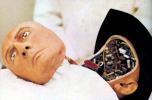
Westworld
1973 -
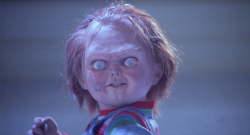
Child’s Play
1988 -
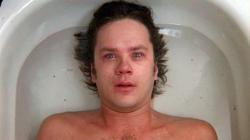
Jacob’s Ladder
1990 -
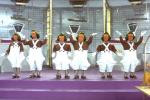
Willy Wonka and the Chocolate Factory
1971 -
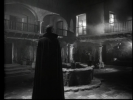
El Vampiro
1957 -
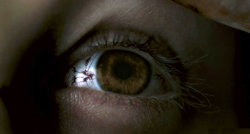
28 Weeks Later
2007 -

Piranha II: The Spawning
1981 -
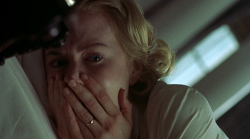
The Others
2001 -
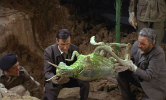
Quatermass and the Pit
1967 -

I Know Who Killed Me
2007 -

Bride of Re-Animator
1990 -

Alucarda
1978 -
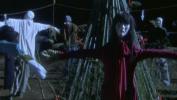
Kakashi
2001 -

Seizure
1974 -

Night of the Living Dead
1968 -

Night of the Living Dead
1990 -
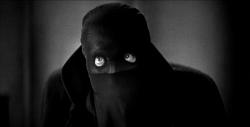
The Bat Whispers
1930 -

Miracle Mile
1988 -

Tintorera
1977 -

Paradise Lost
1996 -

The Cars that Ate Paris
1974 -

Ginger Snaps
2000 -
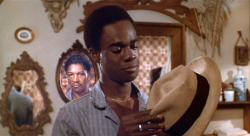
J.D.’s Revenge
1976 -
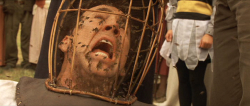
The Wicker Man
2006 -

Black Water
2007 -
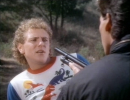
Don’t Panic
1988 -
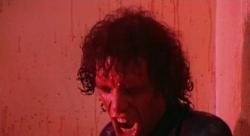
The Driller Killer
1979 -

Targets
1968 -

Mahal
1949 -
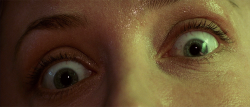
Event Horizon
1997
We don’t do comments anymore, but you may contact us here or find us on Twitter or Facebook.



